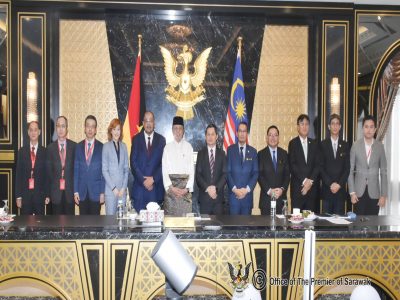Recently, I have visited Kuching the very first time to attend a workshop called the “Study sustainable growth of construction industry with special focus on human resources and skills requirement”.
It was a workshop where I am delegated to attend, organised by a team of consultants who will propose the policy suggestions to the Sarawak state government. There were developers and heads of related ministerial departments like JKR in Sarawak who attended the workshop. I had a fruitful insights in the workshop as the on ground stakeholders have voiced out the problems they faced in their activities which eventually the consultant team could help them to tackle by providing the policy suggestions to the Sarawak state government.
Although it is the problem solving which surrounded the human capital, we would still require to see a bigger picture of the construction industry before drilling down into the human resources element. There is where I find it to be interesting.
Regardless Sarawak or the peninsular Malaysia, there is a master plan in the construction industry to develop the land. It can be involved in buildings, infrastructure and etc. In accordance to the Master Plan, we could know how much money allocated for developing a land, and the usage of every part of the land as there is the zoning regulation which is required to be complied with. For instance, we are not allowed to develop the Malay reserved land. Also, we cannot build a high rise building on a land which has been legally stated as the land for recreational purposes.
From the legal perspective, I personally think that the Master Plan is the policy proposed by the government and the law slips between the policy and the projects. The clear reason would be the master plan is a relatively dynamic document which can be altered based on the changing project conditions over time and in our recent case in Malaysia, the political change. Therefore, the law plays the role of stabilising the dynamic situation by solving conflicts and disputes or at least gives an extent of certainty. A simple example would be the enforcement of a construction contract.
Drilling into the execution of a project, through my almost half year of working experience on big and small projects, I learn that after accepting to work on a project, we first require to identify the underlying problems and find the possible solutions. The crucial part to close the gap between the problems and solutions is to work on the stakeholder analysis. This is where years of operational and strategic experiences are required in order to do a good mapping.
Additionally, based on the power and the interest level of the stakeholders in the project, we would need to take an effective communicational approach to manage and balance the stakeholders’ interest. What I had been experienced is merely a gist of the process and I am keen to learn more and gain more experiences in this area.
About the author:
Khor Yin Fang is the recent graduate of CLP and also graduated from LLB, the Queen’s University Belfast. She is currently working with the Crisis Management Centre and has the working experience on the crisis management and projects planning and implementation. She is also a contributing writer for Human Capital Review, News Hub Asia and Malaysia Global Business Forum.
Services
STAKEHOLDER ENGAGEMENT
BUSINESS INTELLIGENCE
GOVERNMENT RELATIONS
BUSINESS & BROADER MARKET ACCESS
Upcoming Events
‘A WORKING LUNCH WITH NORDIN’: NATIONWIDE TOUR WITH TOYOTA
MGBF Roundtable: Digitalisation of the Food and Beverage Industry
THE SOUTH CHINA SEA: A THREAT OF DISRUPTION FOR BUSINESS?
FOOD SECURITY IN THE BREACH: INDUSTRIALISATION AND WEAPONISATION
MGBF In The News



SPM and the Future of Data





MGBF Roundtable to shape Malaysia’s future in the digital economy

MGBF: Political stability to usher in new era for business

Death by a Thousand Algorithms

KSK Land recognised for investor attraction strategy

KSK Land set to drive further investment into Malaysia

A Need for Strategic Calm
With Change Comes Opportunity


MALAYSIA GLOBAL BUSINESS FORUM TIES UP WITH SCOUTASIA



















